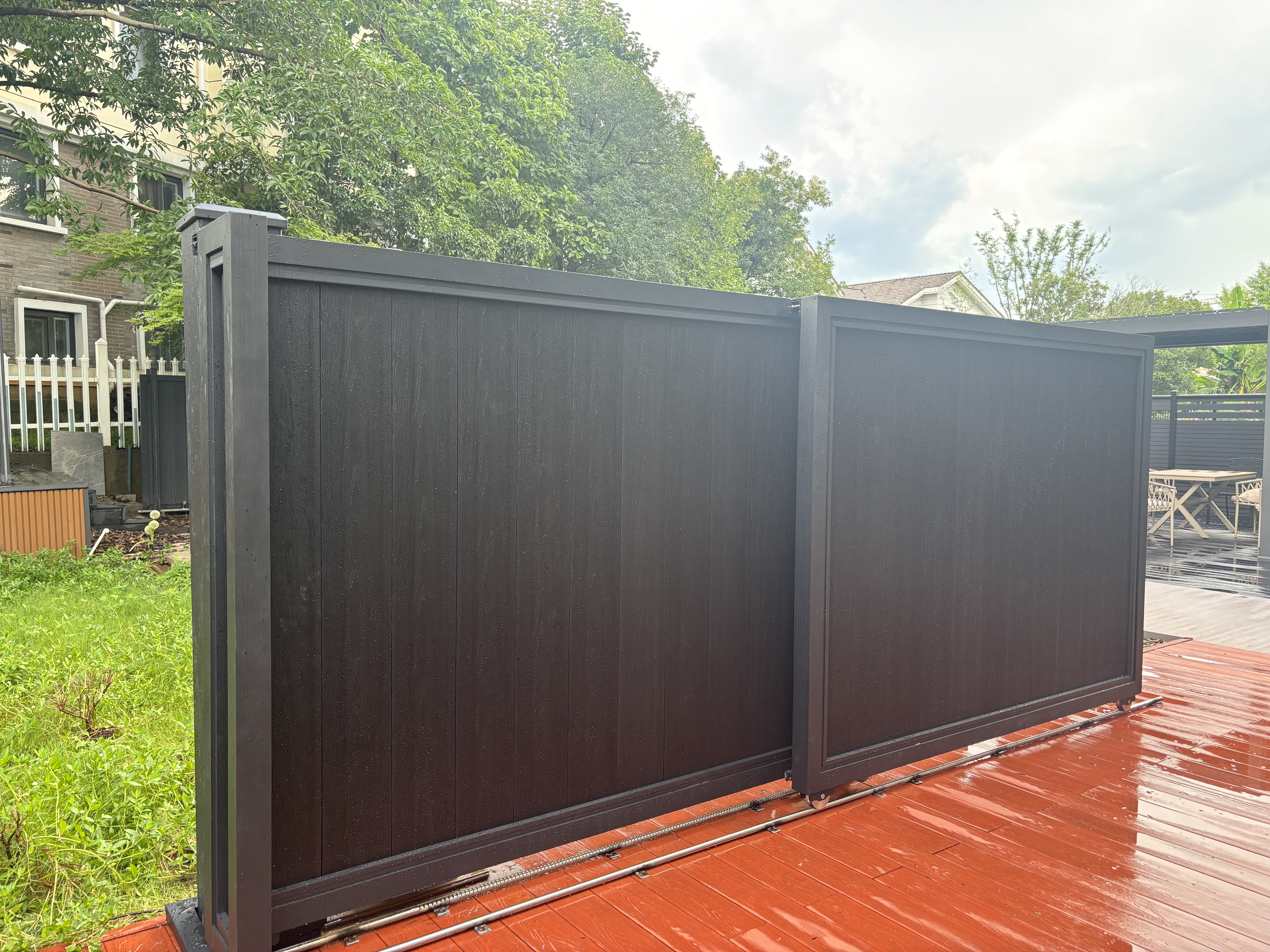Automatic gates have revolutionized access control for residential, commercial, and industrial properties worldwide. These sophisticated entry systems combine convenience with security, providing seamless access while protecting valuable assets. However, like any mechanical system, an automatic gate requires regular maintenance to ensure optimal performance, extend operational lifespan, and prevent costly emergency repairs. Understanding proper maintenance protocols is essential for property owners who want to maximize their investment in automated entry solutions.
Essential Components of Automatic Gate Systems
Motor and Drive Mechanisms
The motor serves as the heart of every automatic gate system, converting electrical energy into mechanical motion. Modern gate motors utilize advanced technology including variable frequency drives, soft-start capabilities, and integrated safety features. These sophisticated components require specific maintenance attention to prevent premature failure. Regular inspection of motor housing, ventilation systems, and electrical connections ensures consistent performance. Temperature monitoring becomes crucial during extreme weather conditions, as overheating can significantly reduce motor lifespan and compromise gate functionality.
Drive mechanisms encompass gears, chains, belts, and transmission systems that transfer motor power to gate movement. These components experience constant mechanical stress during operation, making them particularly susceptible to wear and degradation. Proper lubrication schedules, tension adjustments, and component replacements form the foundation of effective drive system maintenance. Understanding manufacturer specifications for torque settings, backlash tolerances, and operational parameters ensures optimal system performance throughout the gate's operational life.
Control Systems and Safety Features
Modern automatic gate control systems integrate sophisticated electronics including programmable logic controllers, remote access capabilities, and advanced safety protocols. These systems require regular software updates, parameter verification, and functionality testing to maintain optimal operation. Safety features such as obstacle detection sensors, emergency stop mechanisms, and backup power systems demand particular attention during maintenance procedures. Regular calibration of sensing equipment ensures reliable operation while preventing potential safety hazards.
Integration with building management systems, access control platforms, and security networks adds complexity to maintenance requirements. Network connectivity, communication protocols, and data logging functions must be monitored regularly to ensure seamless integration. Cybersecurity considerations have become increasingly important as gate systems connect to broader network infrastructures, requiring regular security updates and vulnerability assessments.
Preventive Maintenance Schedules
Daily and Weekly Inspection Routines
Establishing consistent daily inspection routines forms the foundation of effective automatic gate maintenance programs. Visual inspections should encompass gate alignment, unusual noises, irregular movements, and obvious physical damage. Operators should monitor opening and closing cycles, noting any changes in timing, smoothness, or completion reliability. Daily logs documenting operational parameters, environmental conditions, and any anomalies provide valuable diagnostic information for maintenance professionals.
Weekly maintenance tasks expand beyond visual inspection to include basic functional testing and minor adjustments. Safety system verification ensures emergency stops, obstacle detection, and manual override capabilities function correctly. Cleaning procedures remove debris, dust, and environmental contaminants that can interfere with mechanical operation. Battery backup systems require regular testing to ensure reliable operation during power outages, while remote control functionality should be verified across all programmed devices.
Monthly and Quarterly Service Requirements
Monthly maintenance procedures involve more comprehensive system evaluation and component servicing. Lubrication schedules vary based on environmental conditions, usage frequency, and manufacturer recommendations. Pivot points, sliding mechanisms, and motor bearings require specific lubricants applied according to precise intervals. Electrical connection inspection includes terminal tightness, wire condition assessment, and insulation integrity verification.
Quarterly service requirements encompass detailed system analysis, performance testing, and component replacement planning. Professional technicians should conduct comprehensive evaluations including motor performance analysis, control system diagnostics, and safety feature calibration. Documentation of wear patterns, operational parameters, and component condition supports proactive replacement planning. Environmental protection measures such as weatherproofing, corrosion prevention, and drainage system maintenance become particularly important during seasonal transitions.
Common Maintenance Issues and Solutions
Mechanical Component Problems
Mechanical wear represents the most common category of automatic gate maintenance issues, typically manifesting as irregular movement, increased noise levels, or operational delays. Bearing deterioration, chain stretch, and gear wear develop gradually through normal operation but accelerate under adverse conditions. Early detection through regular inspection allows for planned replacement during scheduled maintenance windows, preventing unexpected failures and costly emergency repairs.
Alignment issues frequently develop due to foundation settling, thermal expansion, or component wear. These problems manifest as binding during operation, uneven wear patterns, and increased motor load. Correction typically requires professional adjustment of mounting hardware, track alignment, and clearance specifications. Regular measurement and documentation of alignment parameters enables proactive correction before major problems develop.
Electrical System Troubleshooting
Electrical problems in automatic gate systems range from simple connection issues to complex control system failures. Power supply irregularities, including voltage fluctuations and phase imbalances, can cause erratic operation and premature component failure. Regular monitoring using appropriate test equipment helps identify electrical issues before they cause system damage. Grounding system integrity becomes particularly important in outdoor installations where lightning and electrical surge protection are essential.
Control system diagnostics require specialized knowledge and equipment to properly evaluate system performance. Error codes, operational logs, and performance parameters provide valuable diagnostic information when interpreted correctly. Software corruption, parameter drift, and communication failures require systematic troubleshooting approaches combining technical expertise with manufacturer-specific diagnostic procedures.

Environmental Considerations
Weather Protection Strategies
Environmental exposure significantly impacts automatic gate system longevity and maintenance requirements. Weather protection encompasses multiple strategies including physical barriers, drainage systems, and material selection. Proper enclosure design protects electrical components from moisture infiltration while maintaining adequate ventilation for heat dissipation. Regular inspection and maintenance of weather sealing systems prevents water damage and corrosion problems.
Temperature extremes affect both mechanical and electrical components differently, requiring specific maintenance adaptations. Cold weather may require synthetic lubricants, battery heating systems, and modified operational parameters. Hot climate installations benefit from additional cooling systems, UV-resistant materials, and thermal protection measures. Seasonal maintenance procedures should address these environmental challenges through appropriate material selection and operational adjustments.
Corrosion Prevention and Treatment
Corrosion prevention represents a critical aspect of long-term automatic gate maintenance, particularly in coastal, industrial, or chemically aggressive environments. Protective coatings, galvanization, and material selection provide primary defense against corrosive attack. Regular inspection identifies early corrosion signs enabling prompt treatment before structural compromise occurs. Proper drainage design eliminates standing water that accelerates corrosion processes.
Treatment of existing corrosion requires systematic approaches including mechanical removal, chemical neutralization, and protective coating reapplication. Environmental monitoring helps identify corrosion risk factors enabling proactive prevention strategies. Sacrificial anodes, cathodic protection systems, and specialized coatings provide enhanced protection in severe environments where standard measures prove insufficient.
Professional Service and Documentation
Maintenance Record Keeping
Comprehensive maintenance documentation provides essential information for troubleshooting, warranty claims, and system optimization. Detailed records should include inspection results, service performed, parts replaced, and operational parameters. Digital documentation systems enable easy access, analysis, and reporting while supporting predictive maintenance programs. Photographic documentation of wear patterns, damage, and repairs provides valuable reference information for future service decisions.
Maintenance scheduling software helps coordinate service activities, track component lifecycles, and manage inventory requirements. Integration with building management systems enables automated reporting and alerts when service intervals approach. Cost tracking capabilities support budget planning and return-on-investment analysis for maintenance programs. Regular analysis of maintenance data identifies trends, recurring problems, and optimization opportunities.
Professional Service Selection
Selecting qualified service providers requires evaluation of technical expertise, equipment capabilities, and industry experience. Certified technicians with manufacturer-specific training provide superior service quality and warranty protection. Service provider capabilities should encompass emergency response, parts availability, and comprehensive system knowledge. Regular performance evaluation ensures service quality meets expectations while identifying improvement opportunities.
Service contracts provide predictable maintenance costs while ensuring regular attention to system requirements. Contract specifications should clearly define service scope, response times, and performance guarantees. Flexible arrangements accommodate varying operational requirements while providing cost-effective maintenance solutions. Regular contract review ensures continued alignment with operational needs and market conditions.
FAQ
How often should automatic gates receive professional maintenance?
Professional maintenance frequency depends on usage intensity, environmental conditions, and system complexity. Most automatic gate systems benefit from professional inspection every three to six months under normal conditions. High-traffic installations or harsh environments may require monthly professional attention. Regular professional maintenance identifies potential problems early, extends system life, and maintains warranty coverage while ensuring optimal safety and performance.
What are the most critical safety considerations during gate maintenance?
Safety considerations include proper lockout/tagout procedures, electrical safety protocols, and mechanical hazard awareness. Always disconnect power before performing maintenance work and use appropriate personal protective equipment. Test safety systems including emergency stops, obstacle detection, and manual release mechanisms regularly. Never bypass safety features during maintenance and ensure all personnel understand emergency procedures before beginning work.
Can property owners perform basic maintenance tasks themselves?
Property owners can safely perform basic maintenance tasks including visual inspections, cleaning, and simple lubrication procedures. However, electrical work, motor adjustments, and safety system calibration require professional expertise. Follow manufacturer guidelines strictly and never attempt repairs beyond your skill level. Regular professional training helps property owners understand appropriate maintenance boundaries while maximizing system reliability and safety.
What signs indicate immediate professional attention is required?
Immediate professional attention is required for unusual noises, erratic movement, safety system failures, or electrical problems. Burning odors, visible damage, or complete operational failure demand immediate service response. Never operate gates showing signs of malfunction as this may cause additional damage or create safety hazards. Document symptoms carefully and contact qualified service providers promptly when problems arise.

